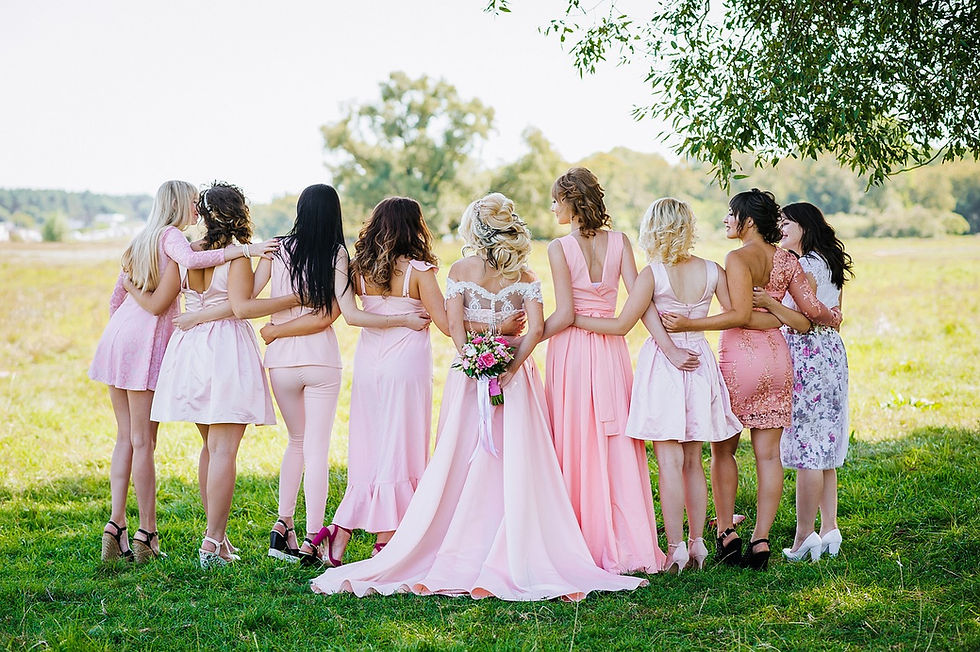25 ways to use Gypsophila for Weddings
- Steph & Tim
- Oct 20, 2022
- 3 min read
Updated: Oct 21, 2022
We often get asked: So how do you say it ..."Gyp-soff-e-la" ? or "Gyp-soo-feelia" - who knows and it doesn't really matter to be fair, that's why most people call this pretty little white flower "Babys Breath".
Florists just call it Gyp... a flower with many personalities.

Baby’s Breath was a staple of the Victorian Cottage Garden because of its light lacy floral canopy and its value as a long-lasting cut flower, but it was most revered because it symbolised everlasting love, purity, and innocence in the Victorian language of flowers.
The name, Gypsophila, means lover of gypsum, a calcium substance found as a mineral deposited in veins in the earth. The name refers to the fact that the plant loves calcium-rich soils and can often be found growing wild in areas where there are gypsum deposits.
Did you know there are quite a few varieties and sizes of this flower as well as coloured versions? The pale pink variety is lovely and delicate too.
Unfortunately, supermarkets sell the worst kind, it's often small and dried up and doesn't do this bloom justice when you see it as a first-grade flower.

So why Baby's Breath?
The flower was introduced in Britain from America in the 1800s and the flowers were frequently given to new or expecting mothers as gifts because of their relationship with children's purity, and innocence. The name Baby's Breath was derived from the fact that this flower was widely used as a special baby shower gift in the US.
Some view the flower as old-fashioned because of its history.
While some like the scent, others complain that it is called baby's breath because it smells like spit or some people liken it to a cat's wee whiff.

This is really a personal matter. Some like it, and some don't, which is undoubtedly the case with most flowers.
Did you know that gypsophila is actually part of the carnation family - if you don't believe me look very closely at each tiny bloom. The genus is a source of saponins that can be used for many purposes, including the production of photographs. Their detergent qualities make them useful in soap and shampoo as well.

Whatever you feel or don't about Gyp it's an incredibly versatile flower that can be adapted to make a myriad of floral designs from a child's headdress to an elaborate hanging cloud installation.
We are going to explore how best to use this flower for weddings with examples of designs that will use the flower at its best.
However you use it, choose a florist who knows how to handle it, (we hope you will choose us of course ) it breaks easily, and can be surprisingly tricky to obtain the perfect spheres that are often seen for wedding designs - it's definitely not a DIY flower or a cheap alternative anymore in the UK, no matter what you have been told.

Gyp looks at its most beautiful when used abundantly - absolutely masses and masses of stems are needed to create certain designs but it's worth it, the cloud-like effect can't be replicated with any other bloom, making it perfect for weddings.
Don't be tempted to use it sparsely it doesn't suit this flower.








Gyp can be mixed with other flowers of course. Brides often choose to add large roses to their bouquets and for their Bridesmaids to have gyp-only bouquets, but you can mix and match however you prefer. Personally, I think it's stunning on its own, but you choose!




If you really can't get enough of this flower, here are some wow factor designs...








Fancy a different colour - pink gypsophila is a natural variety, (a little bit rare so don't rely on this variety always being available) and the Rainbow varieties have had coloured dyes or paint added but look amazing when massed.
Here are a few of our recent Gypsophila orders...


Use massed on its own or mixed with other flowers, which do you prefer?




Contact us to discuss your wedding flowers - gypsophila or not!
Telephone: 01273 951745 (office hours only please)
Email: chirpeeflowers@gmail.com
Contact form via the website: www.chirpee.net
We look forward to hearing from you






